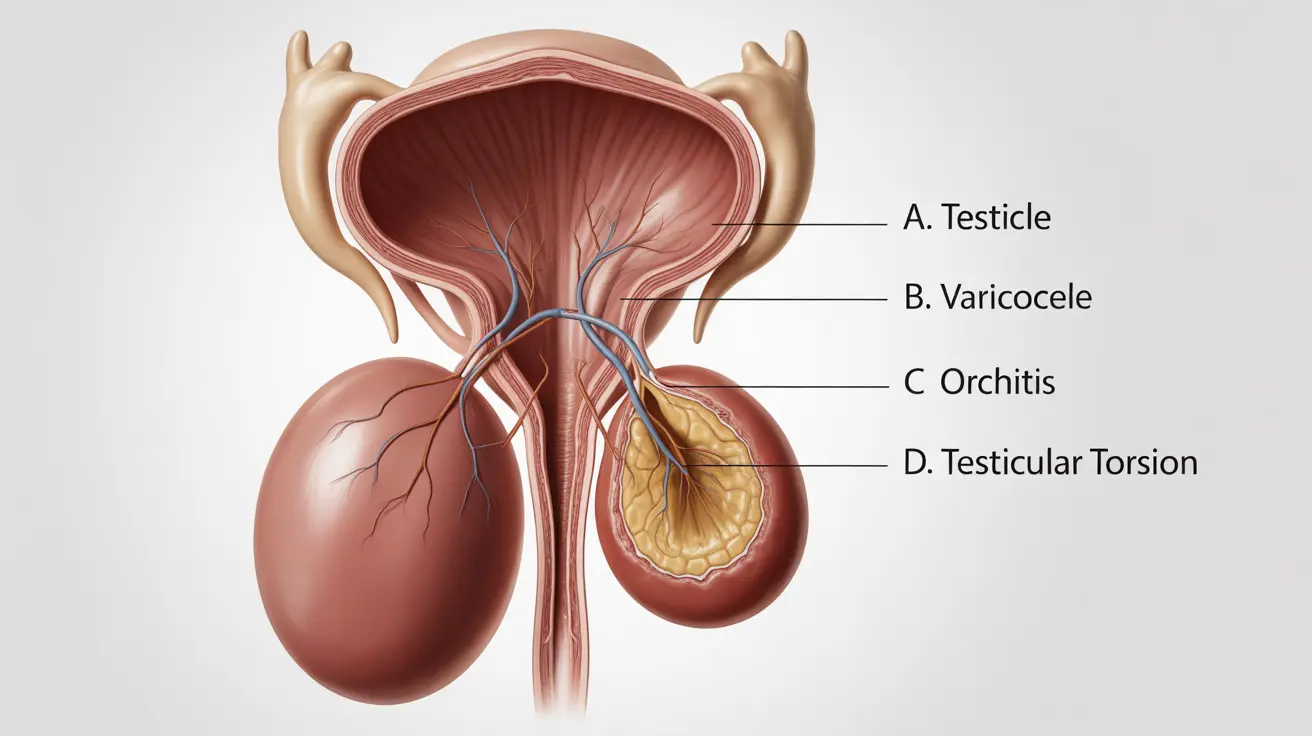Left testicle pain can be concerning and may range from mild discomfort to severe, debilitating pain. Understanding the various causes and knowing when to seek immediate medical attention is crucial for maintaining reproductive health and overall well-being.
While some causes of left testicle pain may be minor and resolve on their own, others require prompt medical intervention. This comprehensive guide will help you understand the common causes, warning signs, and treatment options available.
Common Causes of Left Testicle Pain
Several conditions can trigger pain in the left testicle, ranging from mild to severe:
Varicocele
A varicocele occurs when veins within the scrotum become enlarged, similar to varicose veins in legs. This condition commonly affects the left testicle due to anatomical differences in blood vessel arrangement and typically causes a dull, aching pain that may worsen with physical activity.
Epididymitis and Orchitis
These inflammatory conditions can affect either the epididymis (epididymitis) or the testicle itself (orchitis). Usually caused by bacterial infections, they can result in swelling, tenderness, and acute pain.
Testicular Torsion
This serious condition occurs when the spermatic cord twists, cutting off blood supply to the testicle. It requires immediate medical attention to prevent permanent damage or loss of the testicle.
Emergency Warning Signs
Certain symptoms indicate a medical emergency requiring immediate care:
- Sudden, severe pain
- Rapid swelling of the scrotum
- Nausea and vomiting
- Fever accompanying testicular pain
- Pain that worsens significantly over time
Treatment Options
Conservative Management
Minor cases of testicular pain may be managed with:
- Rest and elevation
- Over-the-counter pain medications
- Ice packs to reduce swelling
- Supportive underwear
Medical Interventions
More serious conditions require specific treatments:
- Antibiotics for bacterial infections
- Surgery for testicular torsion
- Varicocele repair procedures
- Specialized medications for chronic conditions
Preventive Care and Self-Examination
Regular self-examination is crucial for early detection of testicular abnormalities. Perform monthly checks to identify any changes in size, shape, or texture of your testicles.
Key aspects of preventive care include:
- Maintaining good hygiene
- Wearing appropriate athletic support during sports
- Avoiding trauma to the groin area
- Seeking prompt medical attention for concerning symptoms
Frequently Asked Questions
What are the most common causes of pain in my left testicle?
The most common causes include varicocele, epididymitis, orchitis, trauma, and testicular torsion. Each condition has distinct characteristics and requires different treatment approaches.
How can I tell if left testicle pain is a medical emergency like testicular torsion?
Seek immediate medical attention if you experience sudden, severe pain, rapid swelling, nausea, vomiting, or fever. Testicular torsion is a medical emergency requiring treatment within 4-6 hours to save the affected testicle.
What treatments are available for varicocele-related left testicle pain?
Treatment options for varicocele include conservative management with supportive underwear and pain medication, or surgical procedures such as varicocelectomy or embolization for severe cases.
Can infections like orchitis or epididymitis cause left testicle pain and how are they treated?
Yes, these infections can cause significant testicular pain. Treatment typically involves antibiotics, rest, pain management, and scrotal support. Complete recovery usually occurs within several weeks with appropriate treatment.
How often should I perform self-exams to detect lumps or changes in my left testicle?
Perform self-examinations monthly, preferably during or after a warm shower when the scrotum is relaxed. Check for any changes in size, shape, or texture, and report concerning findings to your healthcare provider promptly.




